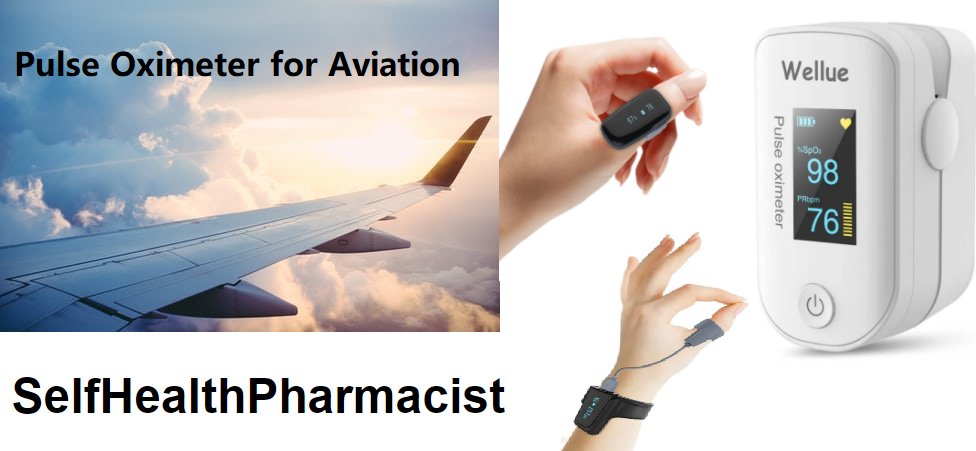Saturation is one of the vital indicators, along with temperature, pulse, pressure.
It is expressed as a percentage: a value of 95% or more is considered normal, in people with chronic lung diseases this indicator may be lower, but not affect vital signs.
In a Hurry? My Fast Answer is
Let me tell you about the Wellue O2Ring – it’s like the superhero of pulse oximeters, seriously!
One of the coolest things about it is that it doesn’t just clip onto your finger like your average oximeter.
Nope, it’s a smart ring that you wear on your finger, making it super comfortable and convenient. You won’t even feel like you’re wearing anything special, yet it’s working its magic behind the scenes.
What sets the Wellue O2Ring apart from the pack is its continuous monitoring feature.
Most pulse oximeters just give you a snapshot of your oxygen saturation and heart rate, but this bad boy keeps tabs on your levels around the clock.
Whether you’re chilling on the couch, out for a jog, or catching those Z’s, it’s right there with you, providing real-time data.
Oh, and speaking of data, this thing doesn’t just show you numbers – it visualizes your trends over time too.
Imagine having a personal health diary that tells you when you’re acing life and when you might need to take it easy. It’s like having a health-conscious buddy right on your finger!
If you’re already itching to get your hands on the Wellue O2Ring (or, well, your finger in this case), I’ve got you covered.
Check out their official product page here.
Table of Contents
Top 3 Pulse Oximeters for Aviation
|

|
|
|
|
|
Why do we need Pulse oximeters in Aviation?
The index of oxygen in the blood is monitored by people with diseases of the cardiovascular and respiratory systems, climbers – to prevent altitude sickness, pilots in sports aviation – to prevent hypoxia, athletes – to control physical activity and play sports at high altitude.
Aviation Pulse Oximeters measure blood oxygen saturation (saturation) :
They determine the amount of hemoglobin (a protein in blood cells) in the airplane that carries oxygen by the brightness of the blood in the vessels.
For example, to determine saturation, pulse oximeters emit light to blood vessels in the wrist area using green, red, and infrared LEDs and measure the intensity of the reflected rays with photodiodes, calculating the color of the blood.
Aviation and Saturation
- The pressure on board a passenger aircraft is similar to that at an altitude of 0-2100 meters above sea level and depends on the type of aircraft and the actual flight altitude.
- The oxygen content in the passenger compartment air is 21%, but as the barometric altitude increases, its alveolar partial pressure decreases.
- The partial pressure of oxygen in the arterial blood (pO2) of a healthy person at sea level is approximately 13 kPa, and at an altitude of 2100 m – about 8 kPa. Symptoms of hypoxia appear only at altitudes above 3,000 m, when the arterial partial pressure of oxygen falls below 7 kPa. At an altitude of 0 meters above sea level, hemoglobin saturation with oxygen is 98%, 2,100 m – 92%, 3,000 m – 87%.
- The passenger compartment is filled with recirculated air, which is changed 6-12 times per hour. The air is very dry (relative humidity – 10-20%) during the flight.
- A change in pressure in the passenger compartment causes pressure changes in closed body cavities when equalization is not possible. The most frequent complaints occur in passengers with infections or allergic diseases of the middle ear or paranasal sinuses.

What do you feel when you have a low saturation in the plane?
This is the indicators of saturation levels in the plane
- Normal level is greater than or equal to 95%Pulse oximetry readings
- 1 degree of saturation is 90-94% Pulse oximetry readings
- 2nd degree of saturation is 75-89%Pulse oximetry readings
- 3 degree of saturation is less than 75% Pulse oximetry readings
- Hypoxic coma less than 60%Pulse oximetry readings
PI reading on a pulse oximeter. Perfusion index (PI) is the intensity of volumetric peripheral blood flow, in other words, PI is the strength of the pulse at the measurement site.
The PI value is measured in the range of 0.02–20.0%
The norm is 4-7%.
Have you been once high in the mountains?
If yes, I think then you are familiar with the symptoms of so-called mountain sickness.
The symptoms of this particular disease should be experienced by a person if the pilots reduced the oxygen supply.
This is the symptoms you will have in the plane with low saturation
- Hypoxia – lack of oxygen in the body (oxygen starvation).
- Hypocapnia – lack of carbon dioxide in the body.
That is, with an insufficient amount of oxygen, you will experience the entire “bouquet”.
These are lethargy, headaches, poor reaction, increased heart rate and blood pressure, shortness of breath, drowsiness.
First aid in the air with low Saturation
For first aid in case of acute conditions that occur during the flight, there is medical oxygen on board (not available on all airlines), a first aid kit, a doctor’s kit, equipment for intravenous infusion and protective kits in case of an infectious disease.
Oxygen Level in the airplane
In general, the level of oxygen in the aircraft cabin is determined by the automatic pressure control system in the pressurized cabin (SARD).
This system is designed to automatically maintain air pressure in the pressurized cabin of the aircraft, thereby ensuring the normal functioning of all on board the aircraft.
SARD is almost never adjusted during cruise flight, it is usually adjusted before departure and adjusted after landing at the destination. The rest of the processes are automatic. Naturally, it is worth noting that the pressure in all sealed compartments inside the fuselage is the same, from the cockpit to the tail section of the aircraft.
Best pulse oximeter for aviation, pilots
A pulse oximeter is a must have for all pilots, especially those who plan to use oxygen while flying. This handy little gadget is worn on the tip of your finger and shows the amount of oxygen in the blood
A pulse oximeter can tell you at what altitude to give supplemental oxygen. The figure will fluctuate depending on the pilot, as a younger, healthier person usually has more oxygen in the blood than someone who is older, overweight, and smokes.
Fingertip pulse oximeters won’t be functional in aviation, it won’t give you functional and continuous monitoring of saturation to determine the most efficient mode of exercise distribution and achieve the best results.
The best choice will be the Wellue O2 ring because it does continus saturation checking.
1.Wellue O2 ring
It is a comfortable ring that will not distract you.
The smart ring displays two main indicators – the pulse (the rhythm of the arteries, which is felt due to the work of the heart) and SpO2 – the amount of oxygen in the patient’s blood.
Oxygen, which is transported throughout the body thanks to hemoglobin, ensures the normal functioning of body cells.
If it is not enough, a person will feel a breakdown, dizziness, headaches and weakness.
This pulse oximeter model is equipped with many useful features that will be useful for aviators.
It not only measures the pulse, but also stores the data in the computer’s memory and later can be shared with your doctor.
Studies of this pulse oximeter are carried out even if a person is asleep or unconscious.
A Wellue O2 ring can use sound to notify you about a decrease in the level of oxygen in your blood.
Best pulse oximeter for mountaineering, high altitude
In healthy adults who do not smoke and live in flat areas, the saturation level is usually in the range of 96-100%. If a person lives in the mountains, his normal SpO2 level may be in the range of 95-100%.
At higher altitudes, the atmosphere becomes thinner. And, although the percentage of oxygen in the air remains the same as below, its total amount decreases. This reduces the force with which this oxygen presses on the walls of the lungs, and the concentration of oxygen in the blood decreases.

If you stay in the mountains long enough, there is a risk of another breathing complication – pulmonary edema.
When the oxygen content in an individual pulmonary vesicle drops, this usually means that little air passes through the vesicle, that is, it is poorly ventilated. Therefore, the blood from such a bubble is redirected to neighboring ones, which are better ventilated.
1.Metene Fingertip Pulse Oximeter
One of the new models of pulse oximeters and good quality pulse oximeters for mounting.
Equipped with a large color screen that displays measurement readings and show accurate measurements.
You can also see the charge indicator on the display. To prolong battery life, the device turns off if it has not been used for more than 5 seconds, and the device signals the end of the measurement with an audible signal.
Management is carried out using the power button.
However, many users note the fragility of the device.
2. SmileCare Blood Oxygen Saturation
Compact model that you can take with you on the road in the mountains.
The device is equipped with a large one-color screen. It takes approximately 20 seconds to measure.
The remaining charge indicator is displayed on the screen, so the device does not turn off unexpectedly.
The device can be carried in a pocket or attached to a belt.
Batteries must be purchased separately as they are not included. Users note the poor build quality and the high price of the device.
FAQs
Do pulse oximeters work at high altitude?
Of course, the pulse oximeter works at high altitude.
If a person lives in the mountains, his normal SpO2 level may be in the range of 95-100%.Pulse Oximeter is often used when traveling on high altitude expeditions.
Does SpO2 change with altitude?
Yes. As altitude increase, SpO2 decreases. It happens especially at altitudes above 2500 m.
What is a normal oxygen saturation at 5000 feet?
It will be around 90%.and it will be a normal measurement for a healthy person.
What if SpO2 is more than 100?
In healthy adults living in a flat area, the saturation level is in the range of 96-100%, if a person lives in the mountains, then – 95-100%. When that level is above 100, it’s indicative of hyperoxia, or excessive oxygen in the bloodstream.
